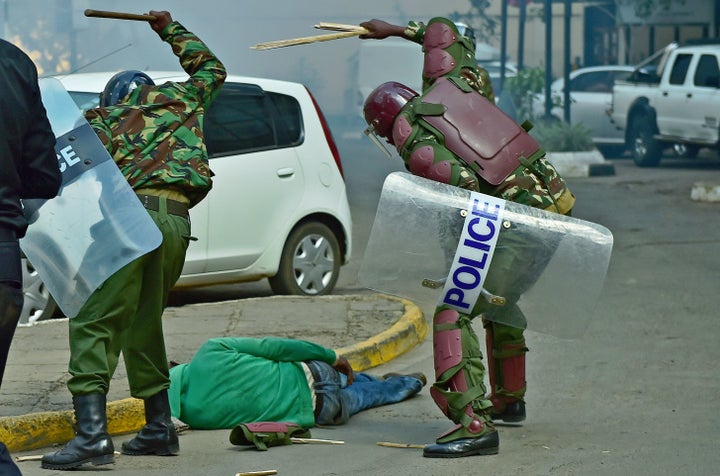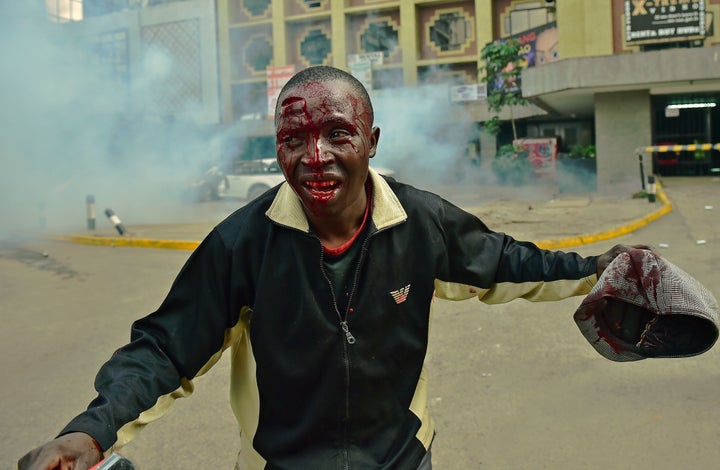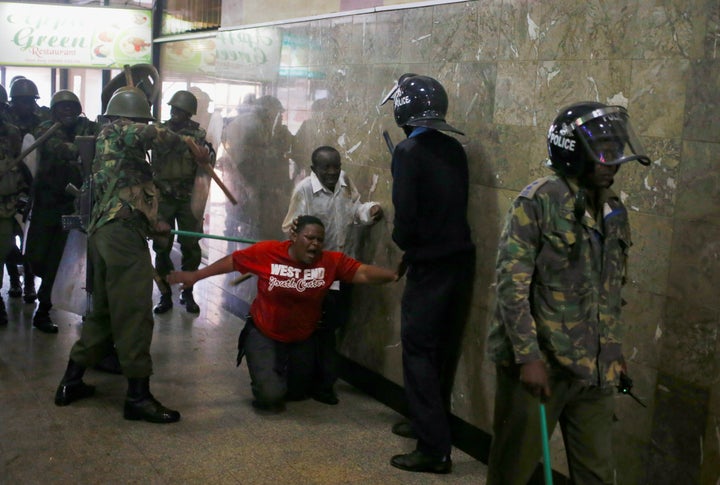
Images of police officers repeatedly kicking and beating a protester as he lies unresponsive on the ground have shocked Kenyans and sparked a debate over police brutality in the country.
Baton-wielding police crushed Monday’s protest by opposition supporters calling for electoral reforms in the Kenyan capital of Nairobi, dousing hundreds of protesters with tear gas and water cannons.
In one dramatic scene that was caught on camera, a man wearing a green sweatshirt sprints away from police and falls into a heap by the curb. He is set on by three police officers, who rain down kicks and blows on his inert body.
Warning: This article contains photos and video that may be disturbing to some readers.
Kenyan media carried conflicting reports about the man’s name and condition, prompting highly charged debate online between supporters of the Kenyan government and the opposition about the facts of the case.
Some outlets reported that the man was a protester, and had died from his injuries. Others reported he was a bystander caught up in the violence, and was recovering at home. An aerial video of the scene emerged on Tuesday appearing to show the man walking away from the scene after the beating.
In the meantime, his image had already become symbolic and galvanized debate about Kenya’s police violence problem.
Kenyan cartoonists drew on a powerful image of the man lying underneath a police officer’s raised boot, captured by Associated Press photographer Ben Curtis.
A cartoon by Patrick Gathara criticized the poor progress of police reforms in Kenya.
Another image by cartoonist Victor Ndula accused the organization that is the target of the protests -- Kenya’s Independent Electoral and Boundaries Commission -- for standing by amid the violence.
Several Kenyans argued on social media that whatever the details of the case, the images illustrate the wider issue of police violence in Kenya. At least 126 people were killed by Kenyan police officers and wildlife rangers in 2015, according to Kenyan human rights group the Independent Medico-Legal Unit.
The hashtag #StopPoliceBrutality was trending in Kenya on Monday.
Kenya’s police chief on Tuesday announced an internal inquiry into possible police wrongdoing after images of beatings and bloodied protesters circulated online. Human rights groups and U.S. officials condemned the violence, with U.S. Ambassador Robert Godec describing it as an “excessive use of force.”
Kenyan police said some officers were also injured at the protests. Some demonstrators threw stones at security forces, according to Reuters. On Tuesday, 15 men were charged with participating in an unauthorized protest, but denied using violence.

Tensions have grown in Kenya in recent weeks as the country heads into the long build-up to August 2017 presidential and parliamentary elections.
Supporters of the opposition CORD coalition, led by Raila Odinga, last month began weekly protests, vowing to continue until the current IBEC commissioners -- who they accuse of bias toward the ruling party -- step down.

The police crackdown on the protests is particularly troubling in light of Kenya’s recent history of fraught elections.
In 2007, violence erupted after Odinga lost the vote amid widespread reports of election fraud. Over 1,200 people were killed in the ensuing clashes, which prompted an International Criminal Court investigation.
In the last elections in 2013, Odinga again claimed fraud had robbed him of a victory and fell out with IBEC, the source of the dispute driving the current protests. Violence was eventually averted that year amid international pressure on political leaders, and local efforts to quell tensions.
